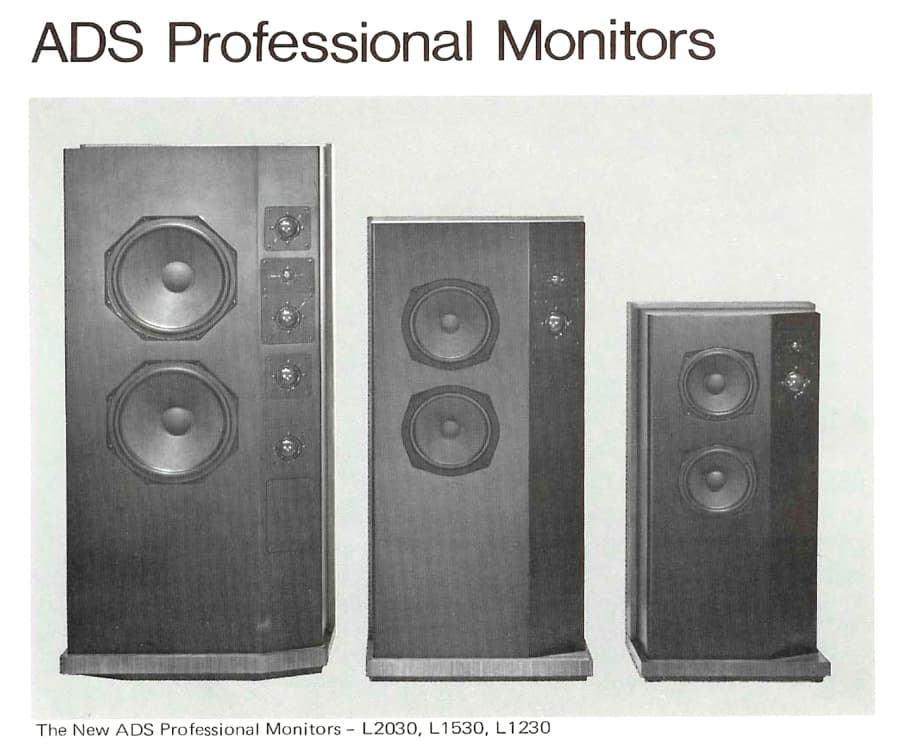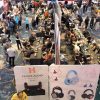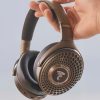I’ve written at length over the past several months about the joys of vintage audio. Just a few weeks ago I waxed poetic about the simplicity, design, performance, craftsmanship, affordability and sustainability of vintage equipment in general, and the stories and nostalgia that accompany individual pieces.
This past weekend I planned to write about a recent addition to the audio collection: the ADS L1230 floor-standing loudspeakers. I’ve been in love with ADS speakers since the early ‘80s when my family turned a two-year expat stay in Canada into permanent residency, and my dad purchased a new stereo – Technics SA-500 receiver, Technics SL-DL1 linear tracking turntable and ADS L420 bookshelf speakers to celebrate our official immigrant status.

The Technics receiver and turntable have both made their way to me in the past few years, but the ADS speakers (which I am assured will also eventually be mine) stay on at my mother’s house where, driven by an Arcam Alpha 8R integrated amp and Alpha 7 CD player, they turn her high-ceilinged, cedar-walled living room into an airy and atmospheric concert hall on a daily basis (at least when I visit). I am consistently blown away by the output of these small two-way (7-inch woofer and 1-inch soft-dome tweeter) speakers.

Imagine my joy then when I found a set of ADS giants lurking in a corner at a local vintage audio store a couple of months ago. Condition excellent, price not staggeringly high or low, and somehow still available. A few hems and haws, a check of the bank account, and home they came.

The ADS L1230s are big. Not as big as the L1530s and L2030s that came out in 1980 as part of the Professional Monitor Series, but about as big as can fit in my 14’ x 22’ listening room and not dominate the space. Featuring two 8-inch long extension woofers, a 2-inch acoustic suspension soft-dome midrange driver, and a ¾-inch acoustic suspension soft-dome tweeter, the L1230s stand 40-inches tall, 19-inches wide and almost 10-inches deep. They’re rated at 30-20,000 Hz (+/- 3 dB) or 20-28,000 Hz (+/- 5dB), with a 6 Ohm nominal impedance and 94 dB sensitivity rating.

Great numbers, but how do they sound? To my ears, these do everything well. Highs are crisp, but not fatiguing. Midrange is airy and detailed, but not clinical. Bass is big and believable, but not boomy. One might not expect this extension from relatively small woofers, but those big cabinets do something magical.
Anyway, I was going to review these in more detail this past weekend when it happened.
A buzz.
From the top woofer in the right speaker.

Darn.
Not a consistent buzz, but one that appeared at higher volumes in passages with prominent bass. Not dramatically loud, but at the upper end of my usual listening volume.
With that, I disconnected the L1230s, and into the shop the right speaker will go for some TLC. Thankfully still under warranty. And thankfully I have ready replacements in my ESS PS4As. But a full L1230 write-up shall have to wait.

And I’m left to consider what happens when things break.
This is the downside of vintage audio.
Things break and, while disheartening, it’s not that surprising. When you’re dealing with equipment that’s been around for 40, 50 or even 60+ years, sometimes driven hard its entire existence and others having sat in a basement or under a sofa for half its life, you must expect that repairs will be needed.
If you’re inheriting or purchasing equipment with an indeterminate service history, you’ll want to have it checked out before connecting it to your system, just to be sure it’s in good working order and doesn’t blow up or destroy something further along the component chain. Or do it yourself if you’re not electronically challenged like I am. My mom’s old Technics pieces and the Sansui AU-555 received from my brother were gone through thoroughly before going into service.

You may purchase something knowing it has issues, and that a repair will be needed. In a case like this, the item usually comes at a discount to account for the repair cost. This was the case with my KEF Calinda speakers; I knew a recap would be required to get them sounding right, and this was part of the price negotiation.
If you’re purchasing something that’s been serviced recently, with partial replacement of out-of-spec components, expect to be going in for further repairs within 2-5 years, give or take. My Sansui AU-999 and Dual 701 each developed problems after about two years of ownership and each was niggly to diagnose and repair. The Dual has been looked at a couple of times now, and the next time it acts up will be shipped off to Fix My Dual for a proper going over by North America’s Dual subject matter expert.

Only when purchasing something fully refurbished (as in every little thing has been replaced) should you expect you’ll be service free for years, if not decades. My Dynaco ST-70, bought fully refurbished, has been rock solid since I first got it (aside from some shipping-related issues on arrival that were soon rectified). Likewise, my Denon DP-1200 is so far issue free.

But no matter what, expect the unexpected.
Part of the allure of vintage audio equipment is the buffing, shining, deoxiting, maintenance and repairs. It’s a bit like collecting and driving vintage cars; you know your vehicles are money pits, but you love them and will do anything to keep them running just so.
Is it any wonder so many vintage audio fanatics have reserve pieces for everything in their system? Second turntables. Third amplifiers. Seventh pair of speakers. Gear rotation as a means of keeping everything fresh – insurance policies in the form of back-up gear, and a perfect excuse for hoarding.

Yes, things will break.
Expect it.
Have a back-up plan and all will be well.













































Vince
July 1, 2021 at 10:11 pm
When vintage audio breaks, it’s a clear indication to get into this century and buy something NEW.
Ian White
July 1, 2021 at 11:17 pm
If you only knew how many “new” pieces of audio break. Including review samples less than a month old.
A lot of the vintage gear manufactured in the 1980s and 1990s is more robust than some of its counterparts made today and tossed into landfills.
Ian White
Eric Pye
July 2, 2021 at 3:46 am
Thanks for your input, but my bed is made and I like it. To each their own.
James Tremblay
July 2, 2021 at 1:21 am
My gosh, that is So right! I was a high-end dealer for a few years in VT and the amount of new gear that came back was depressing. Jolida being the worst, followed by Cambridge Audio and Pro-ject. Belles was pretty bad as well. All my vintage gear is running great and has been for years and years.
Eric Pye
July 2, 2021 at 3:45 am
For the most part, mine has run great as well. And if something throws a hissy fit, the repair’s usually pretty simple and it’s back doing its thing in no time.
rl1856
July 8, 2021 at 2:41 am
ADS L420 ? I have used a pair for at least the past 5yrs, in our vacation house. They are connected to a restored Fisher 400 receiver. Sublime sound. ADS is a very under rated brand that is just starting to attract attention. Connect your pr of L1230 to your ST70 and prepared to be amazed.
Eric Pye
July 9, 2021 at 2:44 pm
Have done (L1230 and ST-70) and have enjoyed. Yes, it’s nice to see ADS getting some attention.
tonyE
August 14, 2023 at 7:13 am
From ’76 to ’78 I had a pair of ADS L500s. Then in a great trade I got a pair of ADS L810s. I still have them. Recently I had the crossovers serviced and replaced the spyder assembly in one of the woofers, it had a small tear.
The two 8 inch woofers in the L810 have always been known for deep, full bass. Some people actually preferred the L710 but not me.
I don’t much listen to the L810s. I have them hooked up to an NAD preamp/tuner (Monitor) and a Nuforce STA200 and that’s one very good combo… I have them in the bedroom which means they don’t get listened to much.
Now, given that by vintage I assume the 70s and some stuff from the 90 (not much from the 80s.. yuck!), yes, by now they ALL NEED a full service. The boards should be taken out, hard to get OEM parts should be replaced OEM (it will take time and money… but we want to preserve the original sound), etc. A thousand bucks on a receiver should be expected. Done right you will get it full back to factory spec, sounding the way it sounded the day it was built.
Sure, it won’t sound as good as a modern High End product, it will sound murkier, darker, slower but it will sound nice. Sort of like having two glasses of champagne at intermission at the orchestra hall.
There are some exceptions to the rule… some specific amplifiers (Sony VFET, Stasis) from the 70s are very good today and some of those tubed Marantz’s have a beguiling sound, but vintage from the 60s and 70s is dated.
There is the borderline vintage from the 90s that can sound very good and quite modern (analog only, no digital) and you can likely get the best price/performance in there.
Now, the ADS. Mine sound quite good. ADS’s fame was its tight bass and clean midbass. Tonally they sound really good but they lack in imaging. In that sense, they are vintage, they are not holographic as more modern designs.
Have fun.